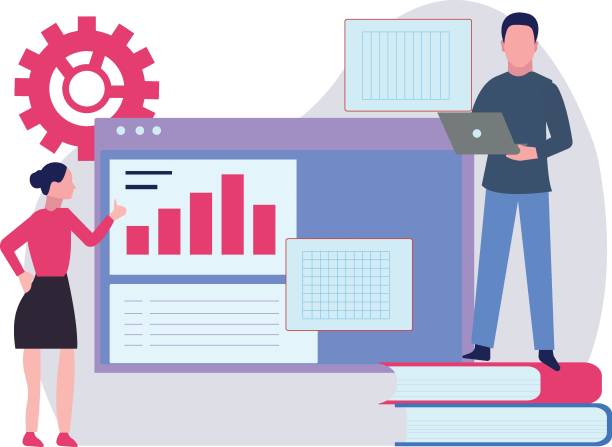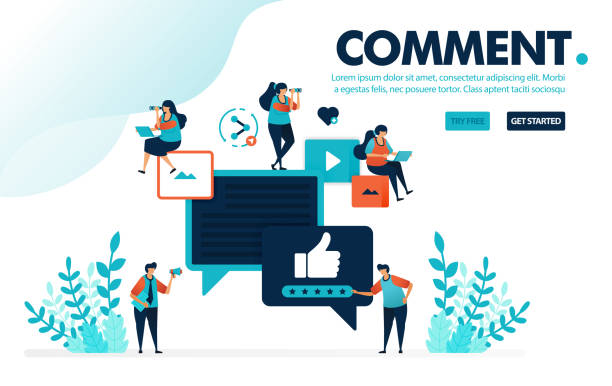Introduction to the Importance of Secure Website Design

In today’s digital world, where the volume of information exchange and online transactions is rapidly increasing, secure website design is no longer a luxury option, but a vital necessity. Website security not only means protecting sensitive user data, but also includes maintaining a business’s reputation and preventing financial and reputational losses resulting from cyber attacks. An insecure website can be a gateway for hackers to infiltrate, steal information, spread malware, and even completely halt online activities. This issue is especially important for businesses that deal with personal or financial user information. Cybersecurity in web design and development requires a comprehensive approach that begins from the initial design stages and continues throughout the website’s lifecycle. Ignoring these principles can lead to catastrophic consequences that are very difficult and costly to remedy. This explanatory approach helps you gain a deeper understanding of the various dimensions of website security design and comprehend its importance. Focusing on this crucial aspect ensures that you provide a secure platform for your online interactions.
Tired of losing customers due to poor e-commerce website design? With Rasaweb, solve this problem forever!
✅ Increase sales and convert visitors into customers
✅ Smooth and engaging user experience for your customers⚡ Get Free Consultation
Common Web Security Threats and How to Identify Them

Understanding common cyber threats is the first step towards strengthening website security. Without a proper understanding of infiltration methods, an effective defense cannot be established. One of the most common attacks is SQL Injection, where an attacker injects malicious SQL code into website inputs to penetrate the database. Cross-Site Scripting (XSS) attacks are another frequently used threat where malicious scripts are injected into web pages to steal user information or create unwanted behaviors. DDoS (Distributed Denial of Service) attacks aim to make the website unavailable by sending a massive volume of traffic. In addition, phishing, Brute Force attacks, authentication failure, and security misconfiguration are also considered serious threats. Identifying these threats requires careful analysis of server logs, using security monitoring tools, and keeping security knowledge up-to-date. Continuous vulnerability assessment and regular penetration tests can help discover weaknesses before attackers exploit them. This analytical section provides you with a comprehensive view of the security threat landscape so you can adopt more effective defensive strategies for secure web development.
Key Principles in Website Security Design
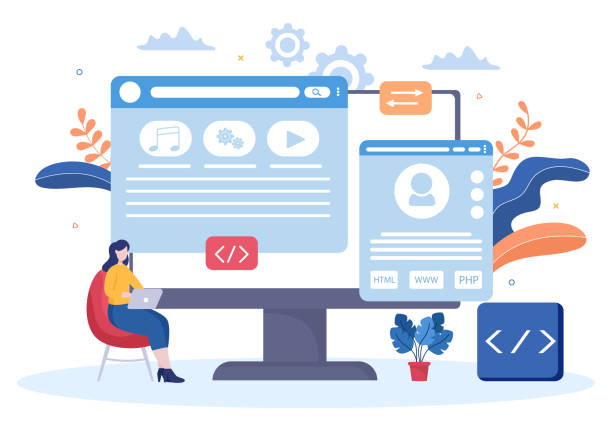
To build a truly secure website, merely fixing vulnerabilities is not enough; security principles must be incorporated from the very beginning at all stages of secure website construction. This educational approach ensures that security is a fundamental layer in the website’s architecture, not an added feature at the end. One of the most important principles is the “Least Privilege” principle; meaning that every user, system, or application should only have the accesses necessary to perform its tasks. This principle helps reduce the scope of potential attacks. Using Input Validation to filter and sanitize all data entered by users prevents injection attacks such as SQL Injection and XSS. Also, proper Session Management and strong encryption of user passwords through secure hashing algorithms are of high importance. Alongside these, special attention must be paid to secure server and firewall configuration, as well as regular updates of software and libraries. The table below lists some of the most important security measures in secure website design:
| Security Principle | Description | Example |
|---|---|---|
| Input Validation | Checking and sanitizing all user input data to prevent injection attacks. | Filtering special characters in contact forms. |
| Strong Encryption | Using secure hashing algorithms for passwords and SSL/TLS for communications. | Storing password hashes instead of plain text, using HTTPS. |
| Session Management | Ensuring the security of session IDs and their proper expiration. | Generating random session IDs and expiring them after inactivity. |
| Error Handling | Not displaying sensitive information in general error messages to users. | Displaying “An error occurred” instead of technical server details. |
| Continuous Updates | Regularly patching operating system, frameworks, and libraries. | Installing security updates for WordPress or Laravel. |
Adhering to these principles is the cornerstone of any secure and reliable website design.
The Role of Security Protocols (SSL/TLS) in Secure Website Design

One of the main pillars of web security in secure web development is the use of Transport Layer Security protocols (SSL/TLS). These protocols are responsible for encrypting communications between the user’s browser and the web server, ensuring that data in transit (such as passwords, credit card information, or personal data) cannot be intercepted and misused by third parties. This specialized section shows you how SSL/TLS helps increase user trust and also improve SEO ranking. When a website uses HTTPS (the secure version of HTTP using SSL/TLS), a green padlock icon appears in the browser’s address bar, indicating a secure connection. This symbol assures users that their communication with the website is encrypted and protected from Man-in-the-Middle (MitM) attacks. SSL certificates come in various types, from Domain Validated (DV) certificates, which only confirm domain ownership, to Organization Validated (OV) and Extended Validation (EV) certificates, which verify more information about the organization’s identity. The choice of the appropriate certificate type depends on the nature and sensitivity of the information exchanged on the website. Correct installation and regular updates of SSL/TLS certificates are vital aspects of maintaining security and efficiency in secure website design. Google and other search engines also prefer websites that use HTTPS in their search results, so using these protocols is not only essential for security but also helps with website SEO.
Are you lagging behind big online stores in the competition?
Rasaweb, with professional e-commerce website design, brings your business online and increases your market share!
✅ Increase brand credibility and customer trust
✅ Easy shopping experience leading to more sales
⚡ Take action now to get a free website design consultation!
Database Security and User Data Protection

Databases are the heart of every website and contain sensitive user information, such as usernames, passwords, emails, financial information, etc. Therefore, database security is a vital guidance component in secure website design. Database infiltration can lead to widespread data theft, information destruction, and loss of business reputation. The first step in protecting the database is to apply the principle of least privilege for database user accounts. Each application or service should only have the necessary accesses to perform its tasks. Using encryption for data at rest (data at rest) and in transit (data in transit) is essential. This means that even if an attacker gains access to the database, the encrypted information will be useless to them. Thorough input validation and the use of Prepared Statements or ORMs in programming to prevent SQL Injection attacks are also of high importance. Additionally, database firewalls should be used, and default database ports should be changed to prevent automated attacks. OWASP Top 10 also regularly lists top web security threats, many of which are directly related to the database. Regular and encrypted database backups and storing them in a secure location allow the website to recover quickly in case of an incident. Continuous updating of the Database Management System (DBMS) and addressing discovered vulnerabilities are the last, but not least important, steps in maintaining user information security.
Continuous Website Updates and Maintenance for Security

One of the critical and often overlooked aspects of maintaining website security is continuous updates and proper maintenance. This informative and explanatory approach helps you understand the importance of security patches. The world of cybersecurity is dynamic; new vulnerabilities are discovered every day, and hackers constantly evolve their infiltration methods. A website that is not updated gradually develops more weaknesses and becomes an easy target for attacks. This includes updating the Content Management System (CMS) like WordPress, Joomla, or Drupal, plugins, themes, programming frameworks, and even server operating systems and database software. Many successful attacks occur due to the use of old and vulnerable software versions for which security patches have been released but not installed. Web hosting providers also play a significant role in this regard and must ensure that their infrastructures are up-to-date and secure. Regular security scans and monitoring server logs to identify suspicious activities are also part of the continuous maintenance process. A website, after its initial secure website design, needs constant care to remain resistant to new threats. Failure to address this can lead to serious security problems that will be very costly and time-consuming to remedy. Security updates not only cover existing loopholes but also provide new functionalities to improve performance and increase security.
Web Security Testing Tools and Periodic Audits
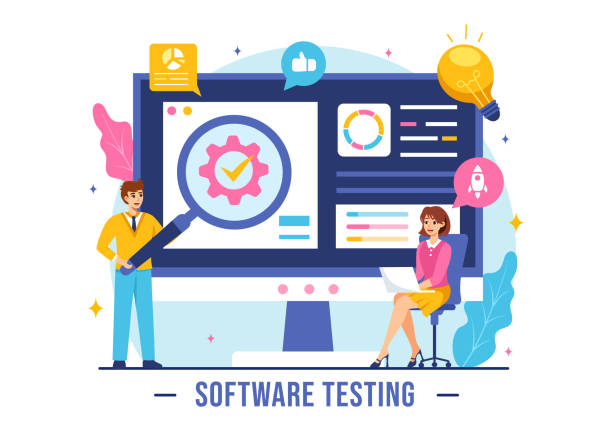
After the secure website design and implementation phase, it is crucial that the effectiveness of security measures is regularly tested and audited. This specialized and guiding section introduces tools that help in identifying vulnerabilities and weaknesses in a website. Penetration Testing or Pentesting, is a process in which cybersecurity experts (Ethical Hackers) with simulating real attacks, try to discover vulnerabilities and penetrate the system. These tests can be performed manually or using automated tools. Web vulnerability scanners like Acunetix, Burp Suite, OWASP ZAP, Nessus and OpenVAS automatically scan the website to identify known weaknesses. These tools can identify a wide range of vulnerabilities including SQL Injection, XSS, and configuration weaknesses. Web Application Firewalls (WAF) can also act as an additional layer of protection, blocking malicious requests before they reach the website. In addition to automated tools, manual security audits by expert professionals are essential for discovering more complex and logical vulnerabilities that automated tools cannot identify. The table below introduces some important web security testing tools:
| Tool Name | Type | Main Use |
|---|---|---|
| OWASP ZAP | Open Source, Web Scanner | Automatic vulnerability identification, manual penetration testing |
| Burp Suite | Commercial/Free, Security Proxy | Manual penetration testing, vulnerability scanner, HTTP analysis tools |
| Acunetix | Commercial, Web Scanner | Comprehensive web vulnerability scanning, advanced reporting |
| Nessus | Commercial/Free, Vulnerability Scanner | Scan network and website vulnerabilities |
| Metasploit | Open Source, Penetration Testing Framework | Exploiting vulnerabilities, system stability testing |
Performing these tests periodically and after every significant change to the website is essential for maintaining a high level of website security.
Security Challenges in Web Development and Future Solutions

With technological advancements and the increasing complexity of website architectures, security challenges in secure web development are also constantly changing and evolving. This section, presented as thought-provoking and analytical content, examines these challenges and offers insights into future solutions. Will our current approaches to secure website design be sufficient to cope with tomorrow’s threats? The emergence of technologies such as the Internet of Things (IoT), Serverless Computing, and Artificial Intelligence (AI) in web development has added new dimensions to the security discussion. For example, the security of APIs (Application Programming Interfaces), which are the backbone of many modern web applications, has become a major concern. Identity and access management in distributed and microservices-based environments also present their own complexities. Furthermore, with the proliferation of social engineering-based attacks and the use of AI by attackers to discover vulnerabilities, the need for smarter and more proactive solutions is felt more than ever. The future of web security will move towards using Machine Learning and Artificial Intelligence to identify attack patterns, detect anomalies, and predict threats. DevSecOps security approaches, which integrate security from the very beginning of the development process into the software development lifecycle, will play a prominent role in reducing vulnerabilities. Also, continuous awareness and education of developers and users about security best practices will be key to building a more secure web ecosystem in the future. Are we ready to keep pace with these changes and provide innovative solutions to maintain security in the web world?
Did you know that poor online store design can drive away up to 70% of your potential customers? Rasaweb transforms your sales with professional and user-friendly e-commerce website design.
✅ Significant increase in sales and revenue
✅ Full optimization for search engines and mobile
⚡ [Get a free consultation from Rasaweb]
Responding to Security Incidents and Recovery Planning
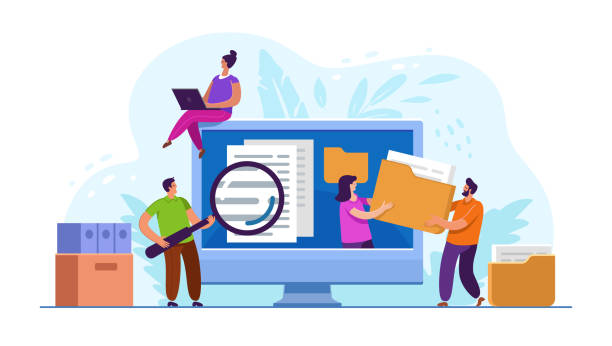
Even with the best secure website design and the strongest measures implemented, no website is completely immune to attacks. Therefore, having a comprehensive Incident Response Plan and a Disaster Recovery Plan is crucial. This guiding section helps you prepare for the worst-case scenarios. An incident response plan should include specific steps: incident identification and detection (how to detect an attack?), incident containment (how to prevent the attack from spreading?), root cause analysis and elimination (how to remove the hacker and close the security loophole?), system recovery (how to restore the system to normal?), and lessons learned and improvement (how to use this incident to strengthen future security?). For example, in case of data theft, protocols for notifying users and legal authorities should be predefined. Regular and encrypted backups of all data and website code in separate and secure locations are the cornerstone of any successful recovery plan. These backups should be periodically tested to ensure their integrity and recoverability. Having a designated team or individual responsible for handling security incidents and internal and external communication (if needed) is also of high importance. Remember that time is crucial in security incidents; the faster you can respond to and contain an incident, the lower the potential damages will be. This proactive and reactive approach in secure website construction will give you more peace of mind and enable continued online activities even after an attack.
Future of Secure Website Design and Final Recommendations

The future of secure website design is evolving at lightning speed, bringing new challenges and opportunities. This section, presented in an engaging and explanatory manner, provides a glimpse into what lies ahead and offers final recommendations for maintaining your website’s security. Imagine your website not only being resilient to known attacks but also capable of predicting and neutralizing unknown threats! This is the dream of proactive security, which is becoming a reality with the advancement of Artificial Intelligence and Machine Learning. Future security systems will be able to identify suspicious behavioral patterns and react to them automatically, even before an attack fully materializes. Passwordless Authentication through biometrics or hardware security keys will soon become the standard, eliminating the complexities associated with password management. Blockchain-based security can also offer new solutions for authentication and distributed, immutable data storage. To keep pace in this rapid evolution, we have a few final recommendations: always be eager to learn and keep your cybersecurity knowledge up-to-date. Follow secure coding best practices and use reputable and up-to-date frameworks and libraries. Don’t forget to invest in advanced security tools and leverage the advice of cybersecurity experts. Remember that security is a journey, not a destination. With a continuous and intelligent approach to secure website design, you can not only protect your digital assets but also gain user trust and be a leader in this competitive digital world. The future is bright, if you are secure!
Frequently Asked Questions
| Row | Question | Answer |
|---|---|---|
| 1 | What is secure website design? | The process of designing and developing websites that are resistant to cyber attacks and protect user data and privacy. |
| 2 | Why is website security important? | To prevent data breaches, financial losses, damage to company reputation, and maintain user trust. |
| 3 | What are some common website security threats? | SQL Injection, XSS (Cross-Site Scripting), CSRF (Cross-Site Request Forgery), weak authentication, and unpatched software. |
| 4 | What is SSL/TLS and what is its role? | Protocols for encrypting data between the user’s browser and the website server, which ensure secure and private communication. |
| 5 | How can SQL Injection attacks be prevented? | By using Prepared Statements/Parameterized Queries, input validation, and ORMs (Object-Relational Mappers). |
| 6 | What is the role of a Web Application Firewall (WAF) in security? | A WAF monitors and filters HTTP traffic between a web application and the internet to prevent malicious attacks. |
| 7 | Why are regular updates of software and libraries necessary? | Updates include patches for known security vulnerabilities that attackers can exploit. |
| 8 | How can XSS attacks be prevented? | By sanitizing (Sanitizing) and escaping (Escaping) all user inputs before displaying them on the web page and using Content Security Policy (CSP). |
| 9 | What does the Principle of Least Privilege mean? | It means that users and systems are given only the minimum necessary permissions to perform their tasks, preventing unnecessary access to resources. |
| 10 | What is the importance of proper Session Management? | To prevent session hijacking and unauthorized access to user accounts through secure and expiring session tokens. |
And other services of Rasaweb Advertising Agency in the field of advertising
Smart Marketing Automation: A dedicated service for growth in sales increase based on the use of real data.
Smart Content Strategy: Designed for businesses that seek to manage campaigns through the use of real data.
Smart Conversion Rate Optimization: Revolutionize click-through rates with the help of marketing automation.
Smart Content Strategy: A new service for increasing campaign management through exclusive programming.
Smart Marketplace: An innovative platform for improving website traffic with an attractive UI design.
And over hundreds of other services in the field of internet advertising, advertising consultation, and organizational solutions
Internet Advertising | Advertising Strategy | Advertorial
Resources
Related Links:
- Increase WordPress Site Security
- How to Design a Secure Website?
- Important Security Tips in Website Design
- Comprehensive Solutions for Increasing Website Security
? Is your business ready to leap into the digital world? Rasaweb Digital Marketing Agency, by providing comprehensive services including advanced e-commerce website design, professional SEO optimization, and effective social media strategies, paves your path to online success. For more information and expert consultation, contact us.
📍 Tehran, Mirdamad Street, next to Bank Markazi, Southern Kazeroon Alley, Ramin Alley No. 6

